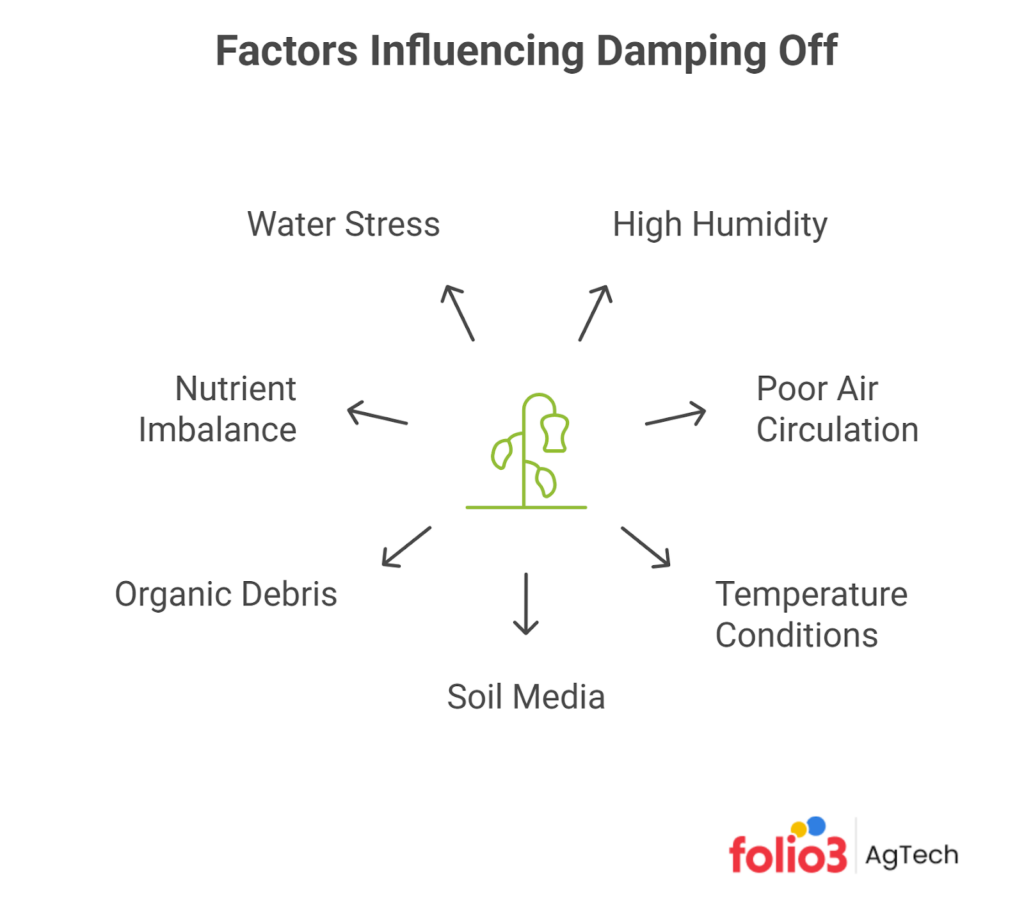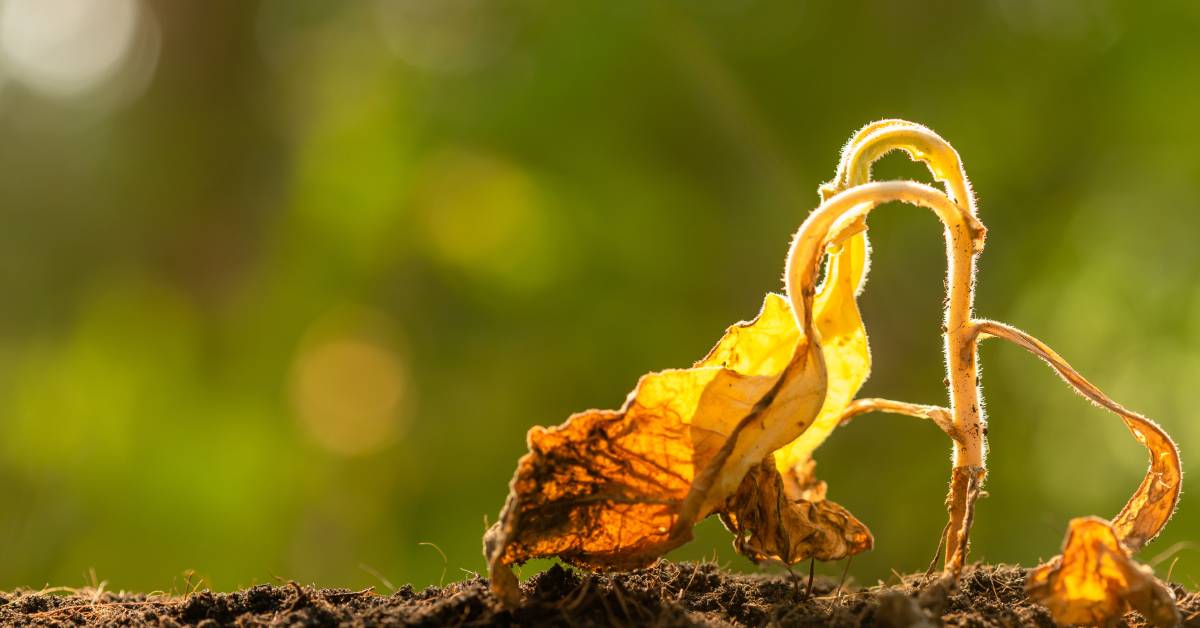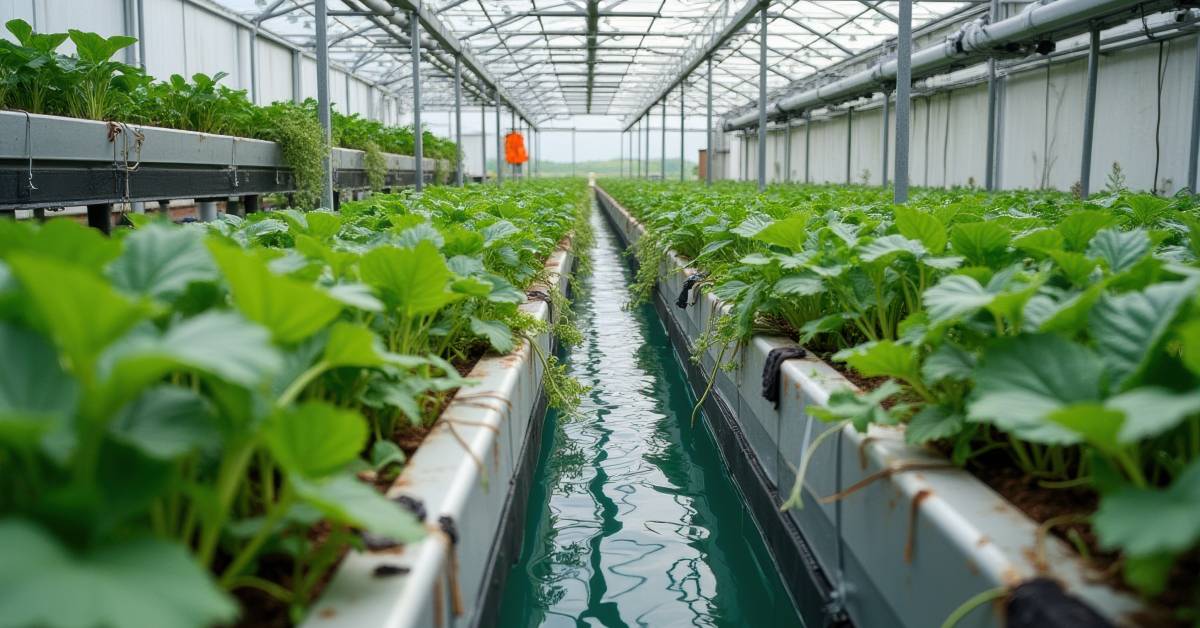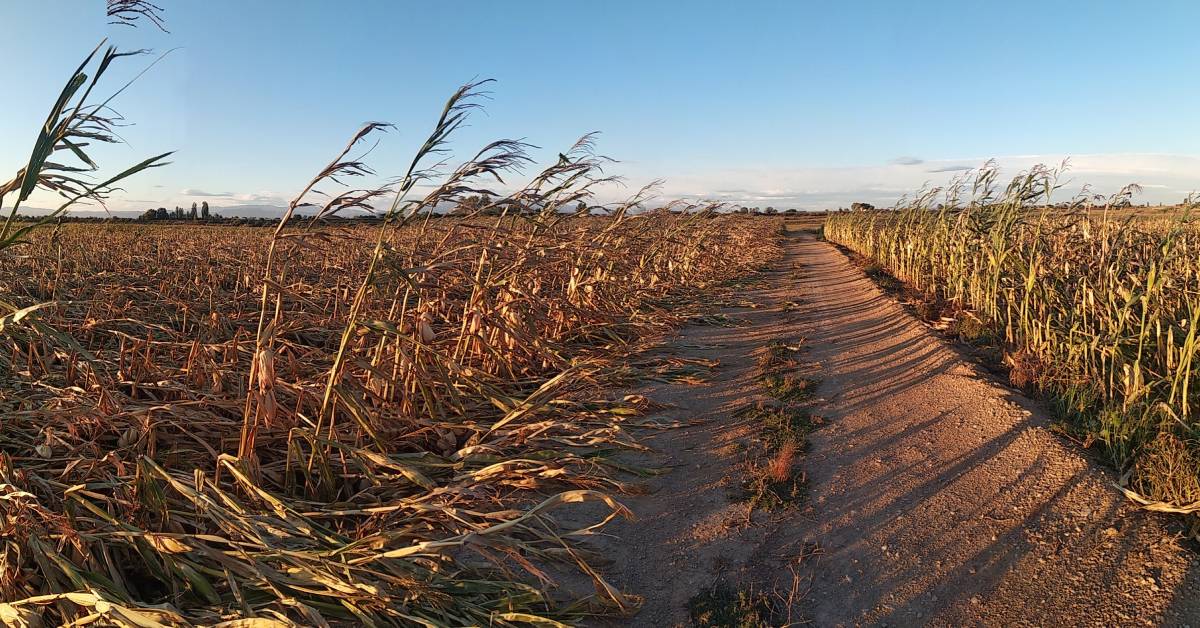Damping off is one of the most common yet underestimated threats to young seedlings. It’s a fungal disease that strikes at the earliest and most vulnerable stage of plant growth, often before the grower realizes something is wrong. In simple terms, damping off in plants causes seedlings to collapse, rot, and die soon after germination, wiping out entire trays in just a few days. Seedling diseases like damping off can cause up to 80–100% establishment loss in crops such as oilseed rape under extreme conditions, making early awareness and prevention essential for growers.
For commercial nurseries and greenhouse operators, the losses caused by damping off can be devastating. It reduces germination success, wastes seed and substrate, and delays crop schedules, ultimately cutting into profit margins. Since the disease spreads quickly through contaminated soil, water, or tools, even a slight oversight in hygiene can trigger large-scale losses.
In this guide, you’ll learn what damping off is, what causes it, how to recognize its symptoms, and the best cultural, biological, and chemical control measures to keep your seedlings healthy from day one.
What Causes Damping Off?
Understanding what causes damping off is essential for protecting young plants before symptoms even appear. The damping off disease is caused by several soilborne pathogens, primarily Pythium spp., Rhizoctonia solani, and Fusarium spp. These fungi thrive in moist, poorly aerated environments and attack seedlings either before or after emergence. Pythium damping off often leads to soft, water-soaked stems, while Rhizoctonia causes dry, sunken lesions near the soil line. Fusarium species, on the other hand, can persist in soil for years, waiting for favorable conditions to infect.
Environmental stress plays a significant role in how severe the disease becomes. Excessive humidity, poor air circulation, overwatering, and contaminated tools or trays create the perfect environment for fungal spores to multiply. These same conditions increase the risk of crop failure, especially in enclosed systems like greenhouses where air exchange is limited.
Poor seed health and non-sterile growing media also act as major triggers. Unclean or re-used trays, overfertilization, and prolonged leaf wetness create a microbial imbalance that favors pathogens over beneficial organisms. That’s why seed testing, sterilized substrates, and smart irrigation management are critical in prevention.
Rotating susceptible species with non-host crops can help break the disease cycle. Crop rotation not only limits pathogen buildup in soil but also promotes healthier microbial diversity. Meanwhile, integrating crop scouting into seedling production helps detect early moisture or discoloration patterns before infection spreads.
Ultimately, what causes damping off is a mix of pathogen presence, environmental imbalance, and cultural oversight. Recognizing these factors early allows growers to build resilient systems that protect both seedlings and profits.
Understanding Pythium Damping Off
Among all pathogens responsible for the damping off plant disease, Pythium spp. is the most common and destructive, especially in enclosed production systems. Pythium damping off primarily targets the root zone and lower stem tissues, cutting off the seedling’s ability to absorb water and nutrients. It thrives in saturated soils or nutrient solutions where oxygen levels are low, making it a frequent issue in both hydroponic greenhouses and traditional nursery setups.
Here’s how Pythium damping off typically progresses:
- Initial attack: The fungus infects seeds or emerging roots, causing them to soften and rot before emergence.
- Post-emergence stage: Seedlings wilt suddenly, with stems turning translucent and water-soaked near the soil line.
- Advanced infection: The plant collapses as roots disintegrate, leaving behind a slimy residue and foul odor.
What makes Pythium particularly troublesome is its adaptability. It can survive in water films, on equipment, or within growing media for extended periods. It spreads rapidly through shared irrigation systems, making greenhouse farming highly vulnerable if water hygiene isn’t strictly maintained.
This pathogen thrives under the same favorable conditions growers try to maintain for plant growth: warm temperatures, high humidity, and nutrient-rich water. However, these conditions can quickly become unbalanced without proper monitoring. Maintaining aeration, water temperature, and filtration in controlled environment agriculture systems is therefore essential to limit the pathogen’s growth.
Because Pythium damping off spreads silently before visible symptoms appear, early detection and strict sanitation remain the most effective strategies to minimize losses and protect young seedlings.
Recognizing Damping Off Symptoms
Identifying damping off symptoms early is the key to protecting young seedlings and preventing widespread loss. The disease can strike at two critical stages, and each shows slightly different warning signs that growers should watch for closely in nurseries or greenhouses.
Pre-Emergence Damping Off
At this stage, damping off seedlings fail to emerge at all. Seeds rot beneath the soil surface, often due to Pythium or Rhizoctonia infection under overly wet or compacted conditions. The soil may develop a sour smell, and affected areas typically show uneven germination or empty patches.
Post-Emergence Damping Off
This is the more visible phase of damping off symptoms. Seedlings sprout normally but collapse within days. The lower stem becomes thin, translucent, and water-soaked. In advanced cases, roots turn brown and mushy, while the seedling topples over.
Visual Cues and Differentiation
Common damping off symptoms include:
- Thinning or constricted stems at the soil line
- Wilting despite moist soil
- Soft, discolored roots with poor anchorage
- White or gray mold near affected plants
Unlike nutrient stress or light deficiency, damping off occurs in patches rather than uniformly. It spreads outward from wet zones or contaminated tools, often mistaken for other common crop diseases.
Maintaining sanitation and applying effective greenhouse pest control measures helps contain the spread. Moreover, adjusting irrigation and airflow supports sustainable crop production, ensuring healthier seedlings with better resilience. By implementing preventive monitoring and balanced environmental control, growers can reduce disease pressure and ultimately increase crop yield from the start of the growing cycle.
Environmental and Cultural Conditions That Favor Damping Off
Damping off often strikes when greenhouse or nursery conditions tip out of balance. Warm, damp, and stagnant environments are a perfect breeding ground for fungal pathogens waiting to attack delicate seedlings. Here’s what typically fuels outbreaks:

High Humidity and Poor Air Circulation
When humidity levels stay consistently high and airflow is limited, moisture lingers on leaf and soil surfaces. That thin film of water creates ideal conditions for spores to germinate and infect roots. Overcrowded trays or tightly packed seedlings make it worse, trapping moisture and heat around the plant base.
Temperature Conditions
Most fungi responsible for damping off, especially Pythium, Rhizoctonia, and Fusarium, become most aggressive between 20–30°C (68–86°F). These temperatures accelerate fungal growth, especially when combined with low light or overwatering. That’s why temperature control and good ventilation are key in propagation areas.
Soil Media and Organic Debris
Reused soil or leftover organic matter can harbor dormant spores that survive between crop cycles. Fresh, well-draining growing media help keep pathogens in check. Consistent cleaning of trays, benches, and tools can prevent recontamination.
Nutrient Imbalance and Water Stress
Overfertilization or erratic watering can stress seedlings, weakening their resistance to damping off in plants. Using precision fertilization practices ensures each seedling receives the right nutrients without saturating the
Modern growers are now using data visualization in agriculture to track real-time humidity, temperature, and soil moisture levels. These insights allow them to predict when damping off conditions are forming and adjust irrigation or airflow before disease spreads.
Damping Off Treatment and Control Methods
Effective damping off treatment relies on an integrated approach, balancing prevention, biological protection, and when necessary, targeted chemical control. Since this disease strikes quickly and spreads through shared water, tools, and soil, growers need proactive strategies to protect their seedlings before symptoms appear.
Cultural Control Practices
The foundation of damping off treatment starts with strong cultural practices. Using sterile soil or propagation media helps eliminate hidden spores before sowing. Tools, trays, and benches should be disinfected regularly with mild bleach or hydrogen peroxide solutions. Proper crop management practices, such as providing adequate spacing between seedlings, prevent moisture buildup and improve airflow.
Watering also plays a critical role. Instead of frequent light watering, opt for deeper but less frequent irrigation to keep the surface dry and roots strong. Excessive moisture encourages fungal activity and suffocates roots, making them more vulnerable to attack.
Biological Control Options
Beneficial microbes are a sustainable way to keep damping off disease pathogens in check.
- Trichoderma species colonize root zones and outcompete pathogens like Pythium and Rhizoctonia.
- Bacillus subtilis forms a protective biofilm around roots, releasing natural antifungal compounds.
- Mycorrhizal fungi enhance root health and nutrient uptake, giving seedlings a stronger start. Many commercial greenhouse operators now use these biologicals as seed or soil inoculants, especially in organic or low-chemical systems.
Chemical Control Measures
When disease pressure is high, selective fungicides can offer an additional layer of protection. Common FRAC (Fungicide Resistance Action Committee) groups used for damping off treatment include:
- Group 4 (Phenylamides), such as metalaxyl or mefenoxam for Pythium species.
- Group 12 (Phenylpyrroles) and Group 14 (Dicarboximides) for Rhizoctonia management.
It’s best to rotate fungicides across FRAC groups to prevent resistance buildup. Application timing is crucial, treat seeds, soil, or seedlings early before symptoms appear.
Technology in Disease Monitoring
With modern IoT-powered crop health monitoring, growers can now detect subtle environmental shifts that trigger damping off before it becomes visible. Sensors track temperature, humidity, and soil moisture in real time, enabling quick responses to prevent outbreaks. When combined with good sanitation, biological protection, and strategic chemical use, these tools make damping off one of the most preventable seedling diseases in controlled production systems.
Preventive Strategies for Long-Term Protection
Preventing damping off begins with sound greenhouse hygiene and consistent environmental control. Since damping off plant disease spreads rapidly in warm, humid conditions, growers must focus on prevention rather than cure. Even minor lapses in sanitation or irrigation practices can allow fungal spores to thrive and infect healthy seedlings.
Use Certified Seeds and Clean Propagation Trays
Start with certified, treated seeds that have been tested for pathogen-free quality. This simple step can significantly lower the risk of introducing Pythium, Rhizoctonia, or Fusarium into your propagation area. Make sure propagation trays, pots, and tools are disinfected before every use. Contaminated equipment is one of the most common entry points for damping off pathogens. Choosing strong genetics through careful seed selection also helps seedlings establish faster, reducing vulnerability to infection.
Maintain Airflow and Temperature Balance
Good airflow and temperature regulation are essential for suppressing fungal activity. Poor ventilation leads to stagnant, humid air where damping off thrives. Keep vents, circulation fans, or exhaust systems active to maintain a uniform climate. Ideal temperatures for most seedlings range between 20–25°C (68–77°F) with humidity kept below 70%. Regular climate monitoring ensures that seedlings stay strong and disease pressure remains low.
Ensure Irrigation Hygiene and Substrate Quality
Excess water is a breeding ground for pathogens. Use clean, filtered, or UV-treated water to prevent cross-contamination between trays. Avoid overwatering or splashing, which can spread fungal spores across seedling surfaces. Choose sterile, well-draining substrates rather than reused or organic-rich soil that retains excess moisture. Consistent irrigation hygiene prevents damping off from taking hold and maintains balanced root-zone oxygen levels.
By combining sanitation, environmental control, and disciplined watering practices, growers can create a resilient defense system that keeps damping off away for the long term, ensuring healthier seedlings, higher germination success, and more reliable crop establishment.
How Folio3 AgTech Supports Growers in Preventing Damping Off
Early detection is the most effective defense against damping off, especially in fast-moving nursery and greenhouse operations. When seedlings are only days old, even a few unnoticed infections can spread rapidly across trays or hydroponic channels. That’s where data-driven monitoring becomes essential. Folio3 AgTech’s AI Crop Disease Detection Software helps growers identify risks early, track environmental conditions, and take preventive action before disease pressure leads to significant losses.
This advanced platform integrates automation, imaging, and analytics to give real-time visibility into plant health. By combining visual scouting with digital recordkeeping, it turns routine monitoring into an intelligent early warning system, helping you spot subtle signs of damping off before they cause irreversible damage.
Key Features Include:
- Real-Time Crop Monitoring
- Disease Prediction Models
- Image-Based Diagnostics
- Smart Alerts and Recommendations
- Data-Driven Treatment Records
With Folio3 AgTech, greenhouse and nursery operators can create a structured disease prevention framework built on accuracy and foresight. Predictive analytics allow the system to recognize early-stage environmental patterns linked to damping off outbreaks, while smart alerts notify growers instantly about deviations in humidity, temperature, or moisture balance.
In essence, digital scouting bridges the gap between observation and action. By turning data into timely decisions, Folio3 AgTech helps growers minimize losses, maintain consistent seedling quality, and protect every crop from the hidden threats that often go undetected in manual scouting alone.
Conclusion
Damping off may seem like a small issue limited to seedling trays, but its impact can ripple through entire production cycles, delaying growth, reducing yield, and increasing operational costs. Because the disease develops rapidly under the right environmental conditions, prevention and early detection are far more effective than reactive treatment. Understanding the causes, symptoms, and environmental triggers of damping off in plants allows growers to make informed decisions about hygiene, substrate choice, irrigation, and ventilation, ensuring their young plants develop strong, disease-free foundations.
In modern growing systems, especially greenhouses and hydroponic setups, technology has become a key defense. Digital tools like Folio3 AgTech’s Crop Disease Management Software enable data-driven monitoring and predictive insights that traditional methods often miss. With continuous visibility into crop health, growers can detect early warning signs, act quickly, and maintain a healthy growing environment from germination to harvest. This integration of biological understanding with digital precision helps minimize loss, optimize inputs, and create a more sustainable production system overall. By combining real-time analytics with early intervention, growers can not only prevent damping off but also enhance plant vigor, improve germination rates, and ensure long-term consistency across every growing cycle.
FAQs
How Do You Fix Damping-Off?
Fixing damping off starts with removing and discarding infected seedlings and sterilizing trays, pots, and tools. Replant only in fresh, sterile soil or a clean growing medium. Use biological agents such as Trichoderma harzianum or Bacillus subtilis to suppress pathogens and improve root protection. Ensure proper airflow, moderate watering, and avoid overcrowding to keep humidity under control.
Is Damping-Off Caused by Overwatering?
Yes, overwatering is one of the leading triggers of damping off in plants. Constantly wet soil creates anaerobic conditions that allow fungi like Pythium and Rhizoctonia to thrive. Always water based on seedling needs and ensure that trays or pots have proper drainage.
What Does Damping Off Mean?
Damping off refers to a seedling disease where fungal or oomycete pathogens attack seeds and young plants, causing them to rot or collapse at the soil line. It typically occurs during germination or early growth stages.
What Fungicide Is Used for Damping-Off?
Fungicides containing active ingredients such as metalaxyl, captan, or thiram are commonly used to treat damping off disease. However, chemical use should be guided by diagnosis and label recommendations.
What Temperature Kills Damping-Off?
Most damping-off pathogens become inactive above 50°C (122°F). Steam or heat-treating soil and growing media before planting helps eliminate residual spores, reducing the risk of reinfection.






